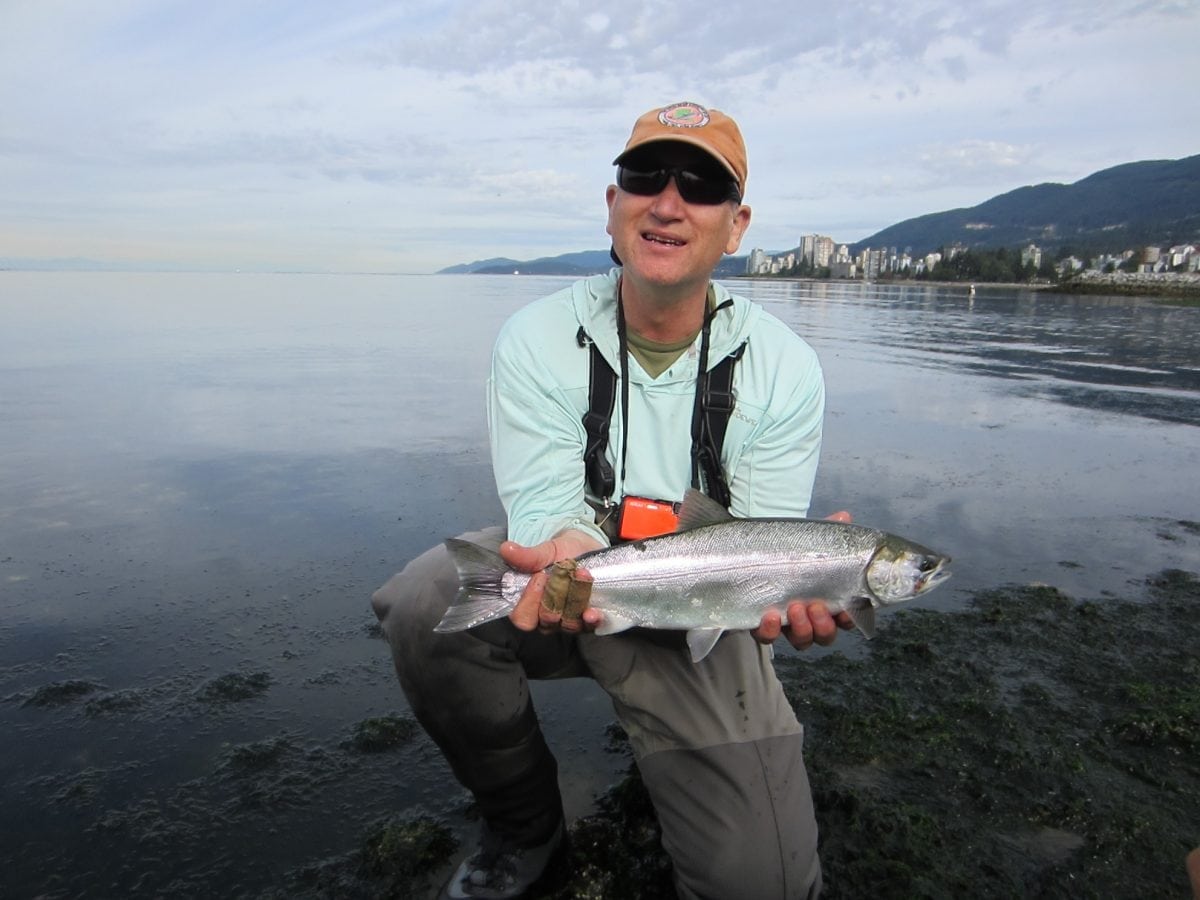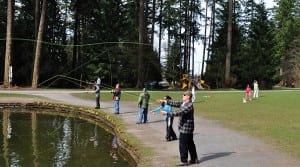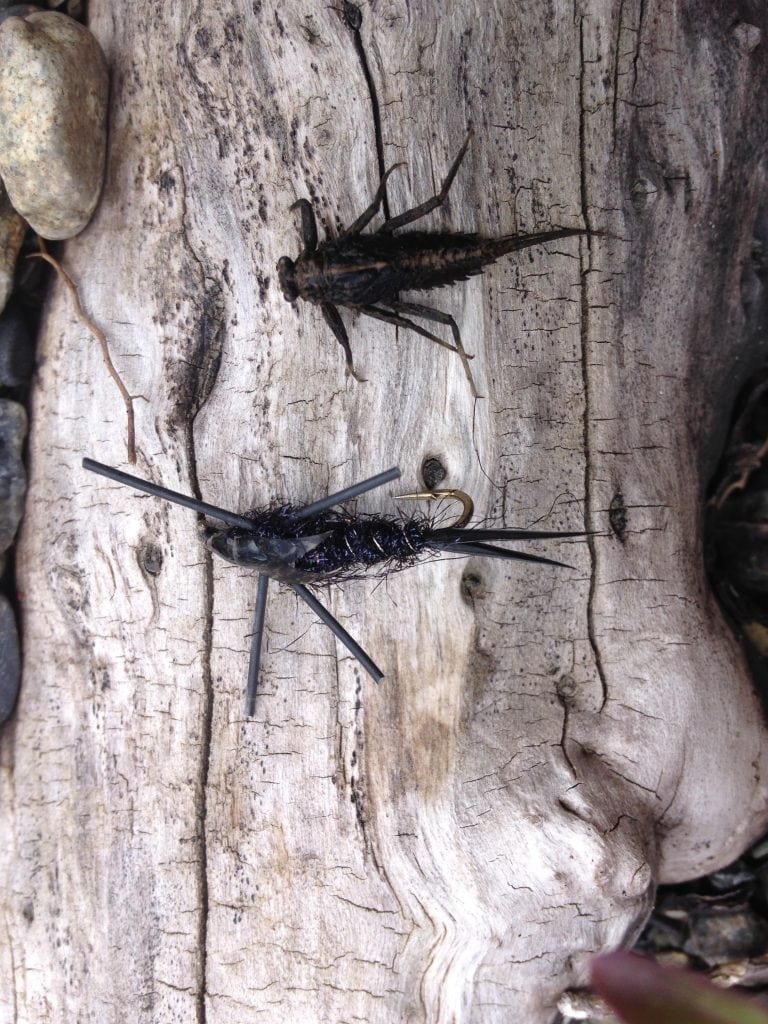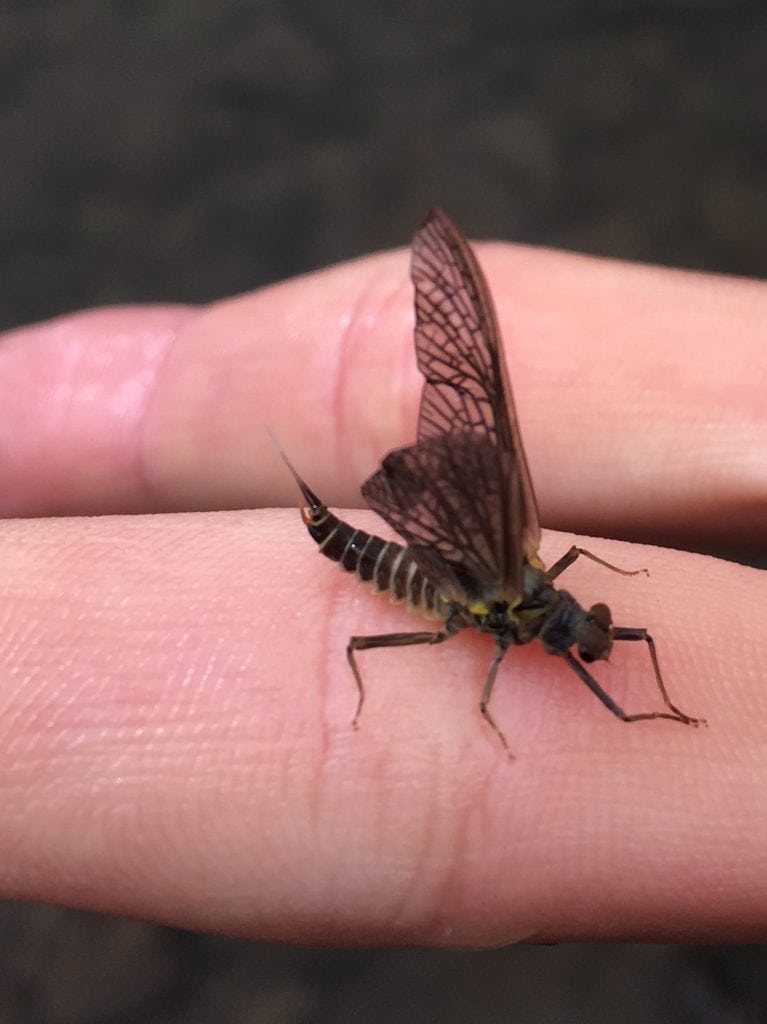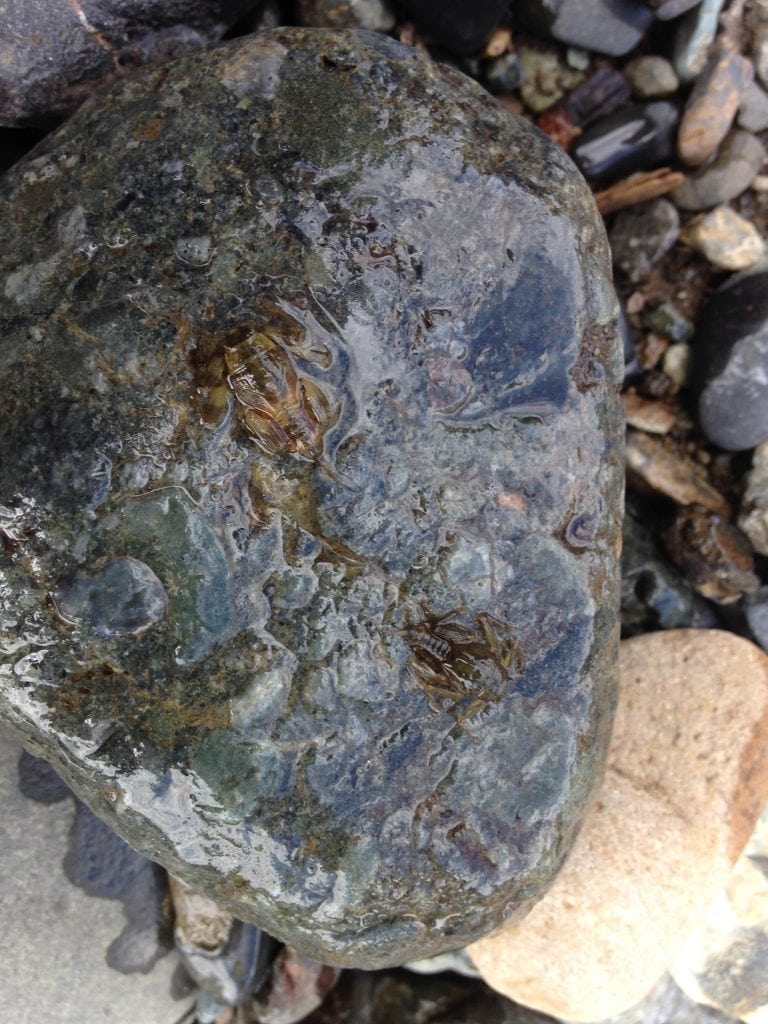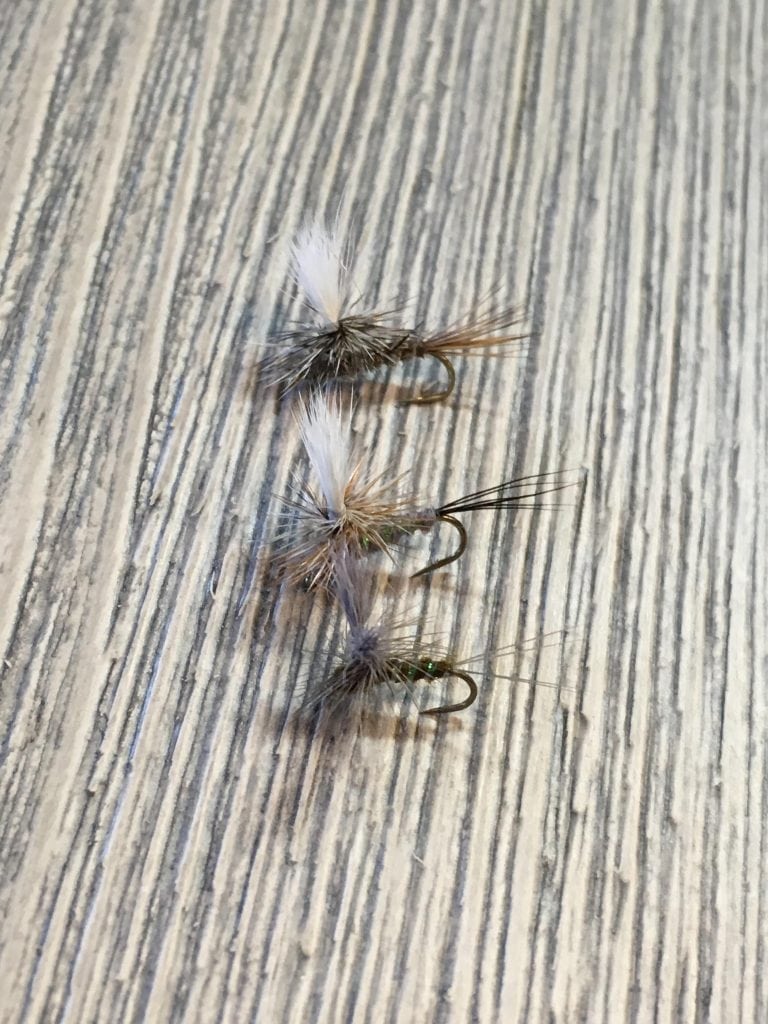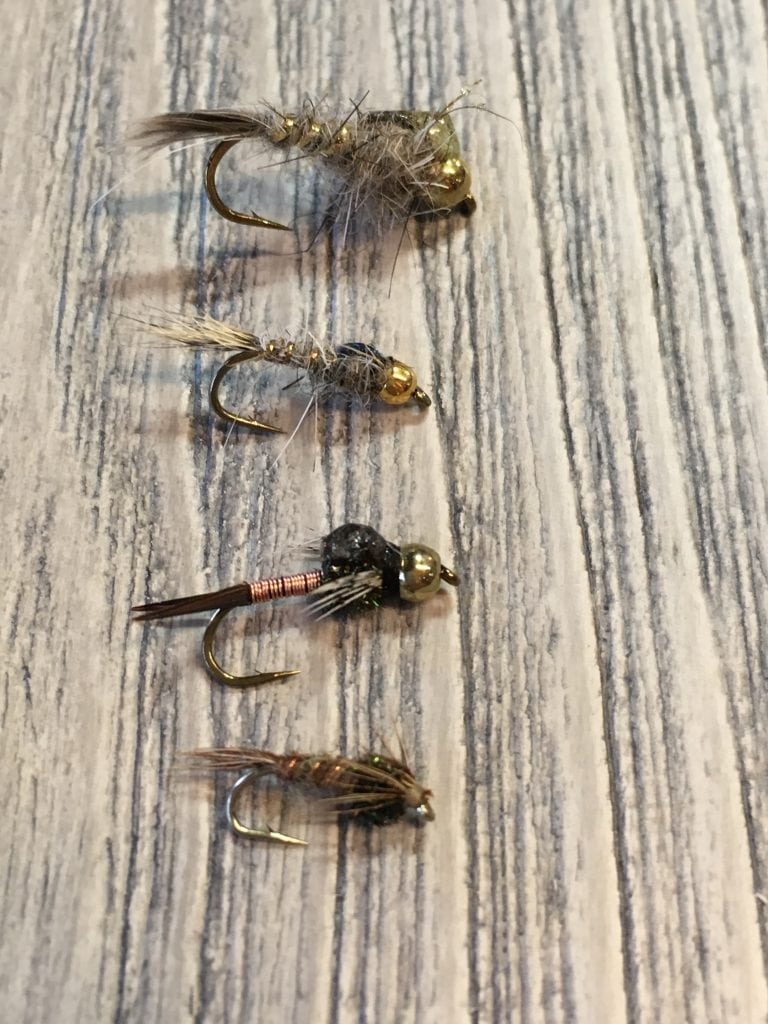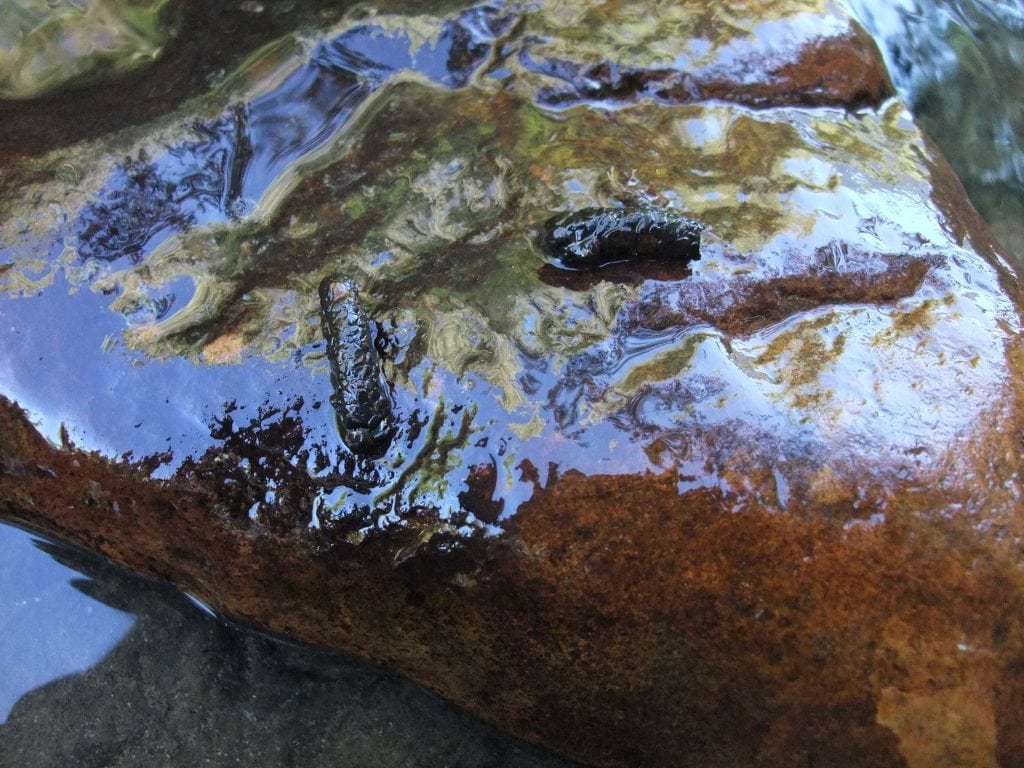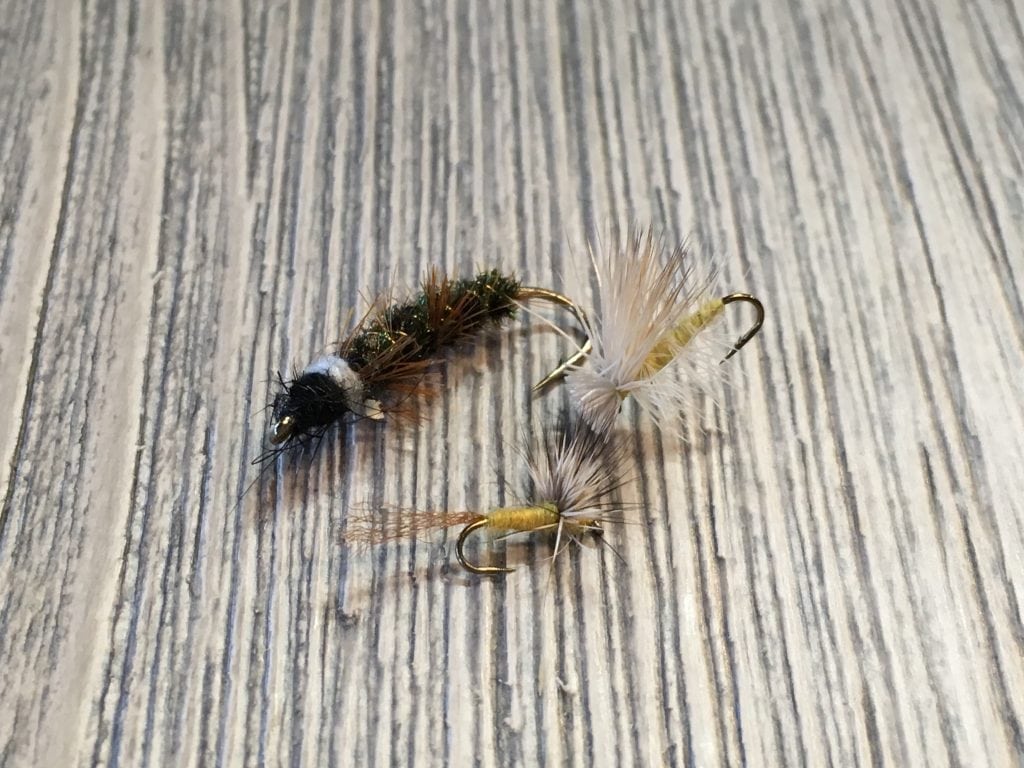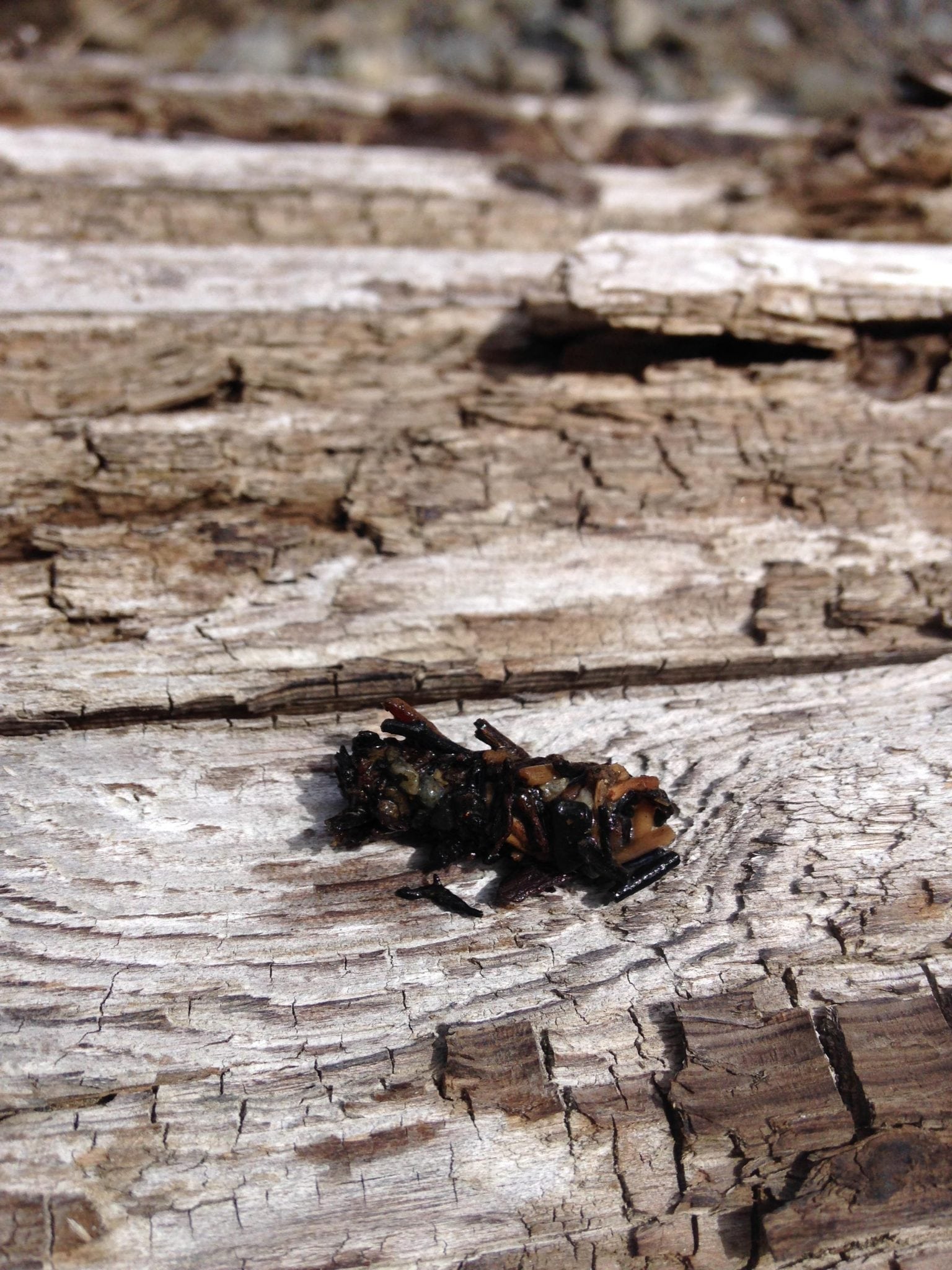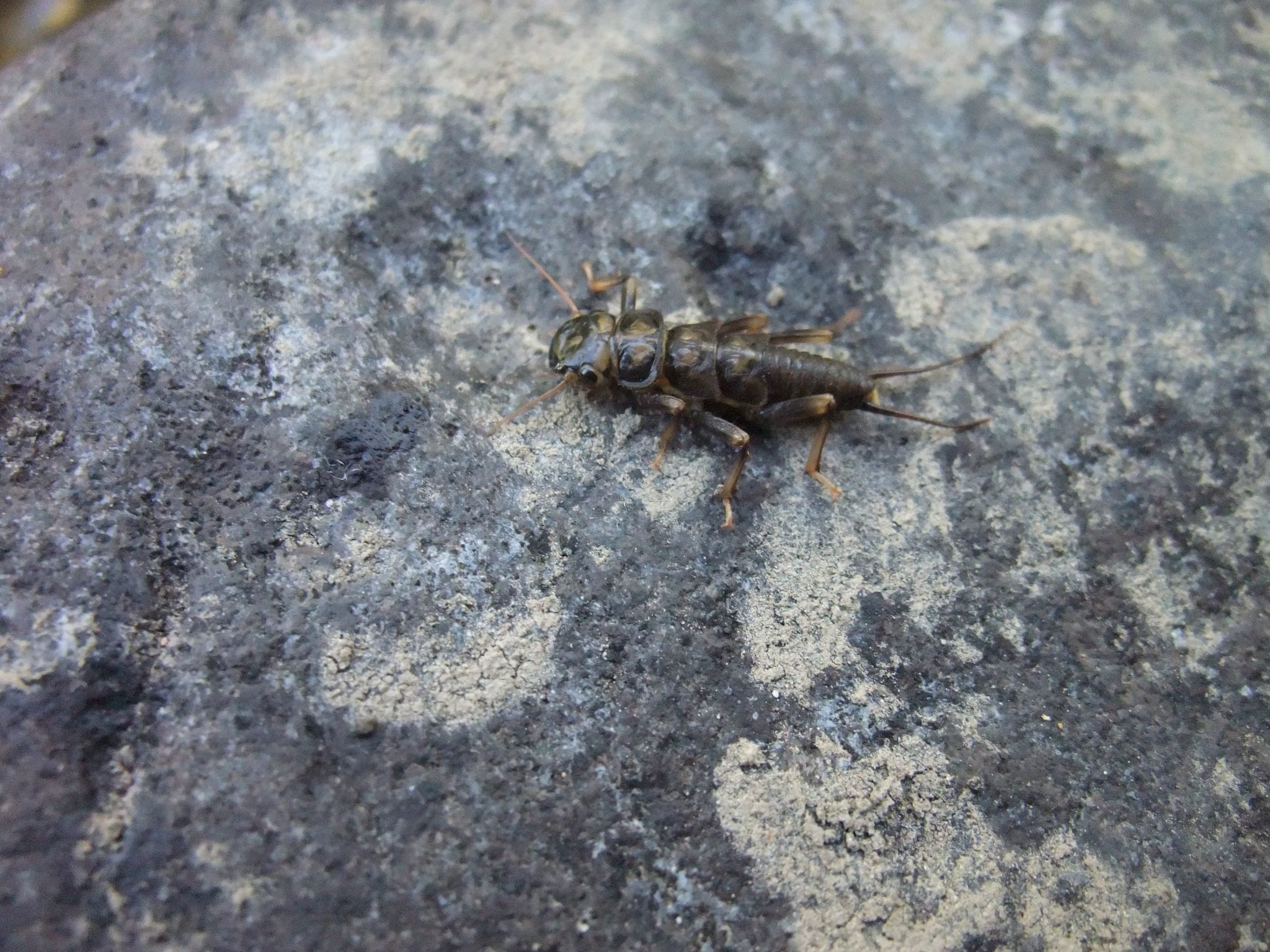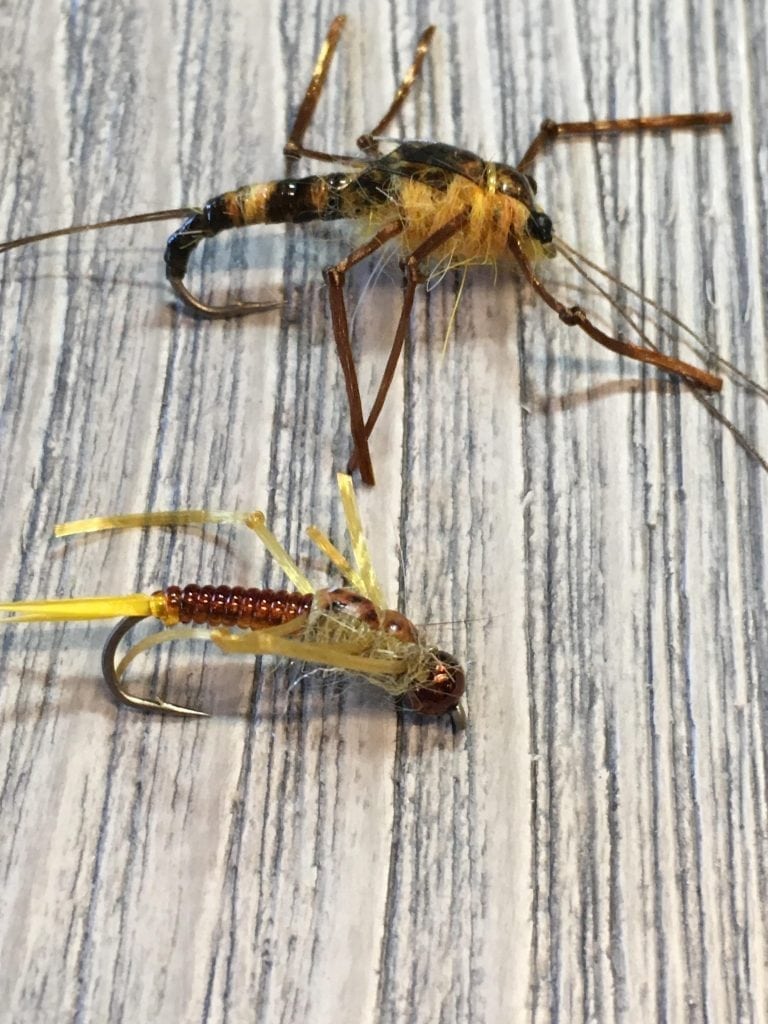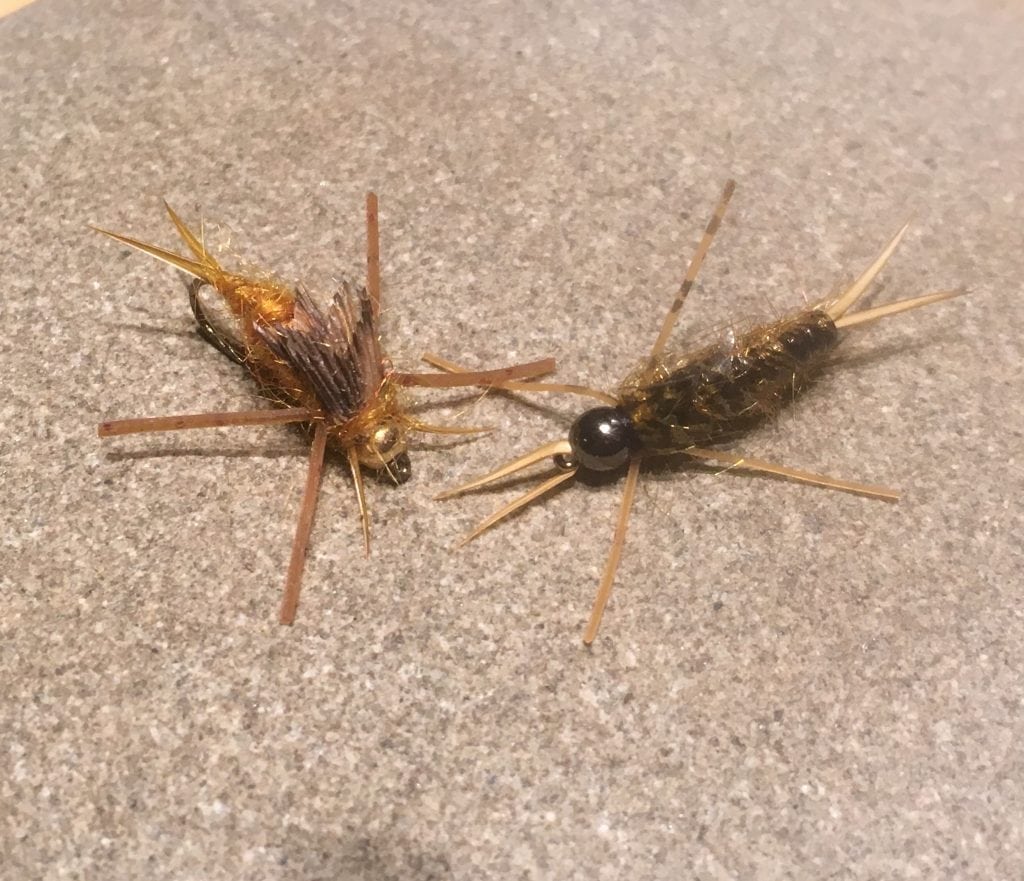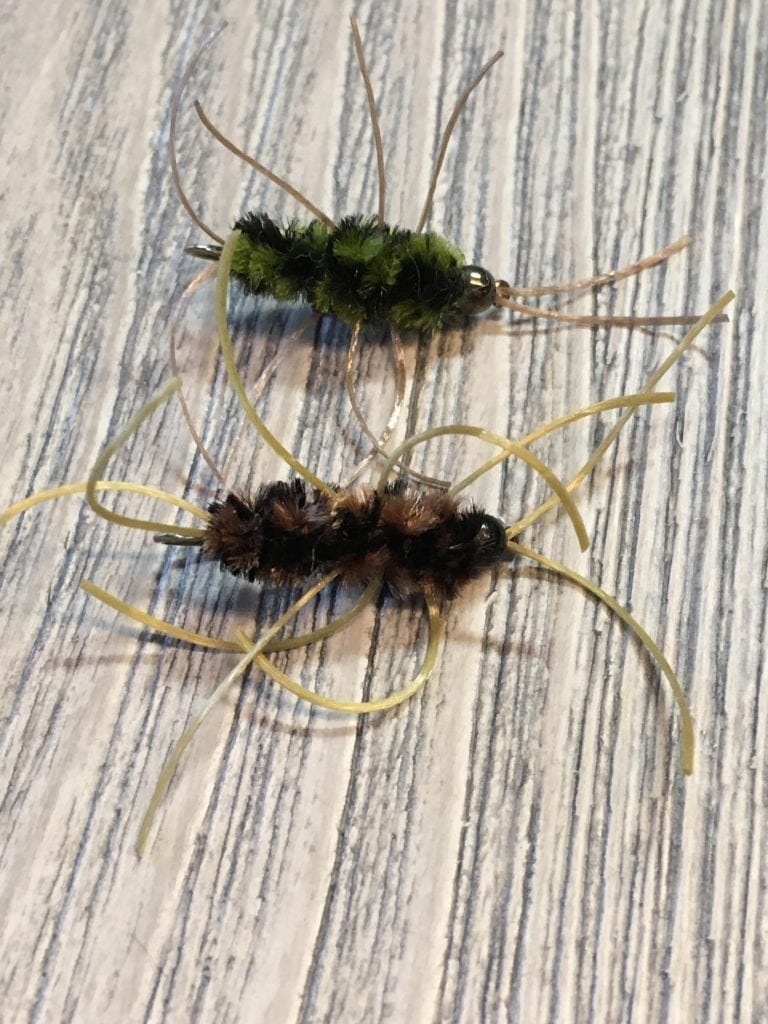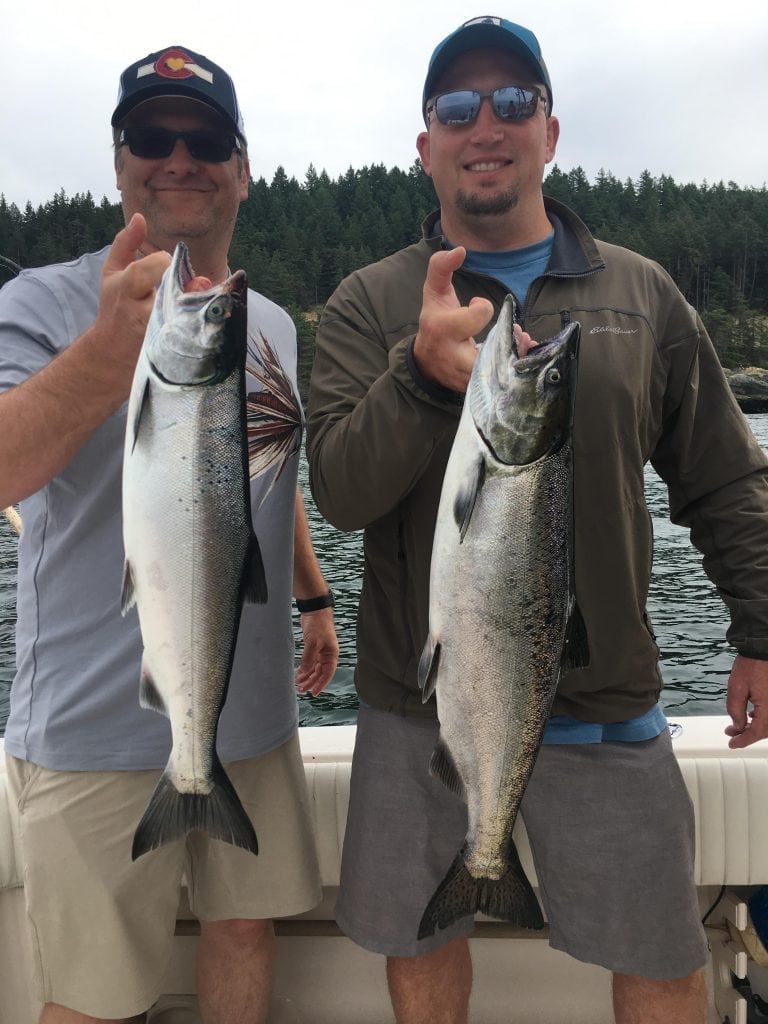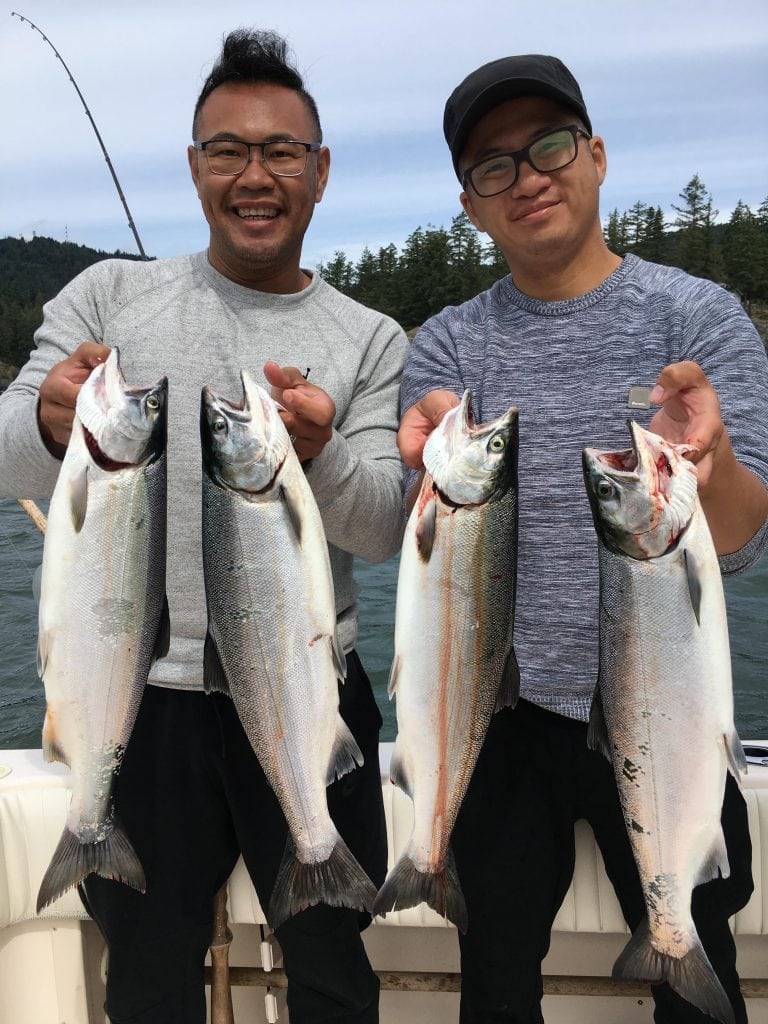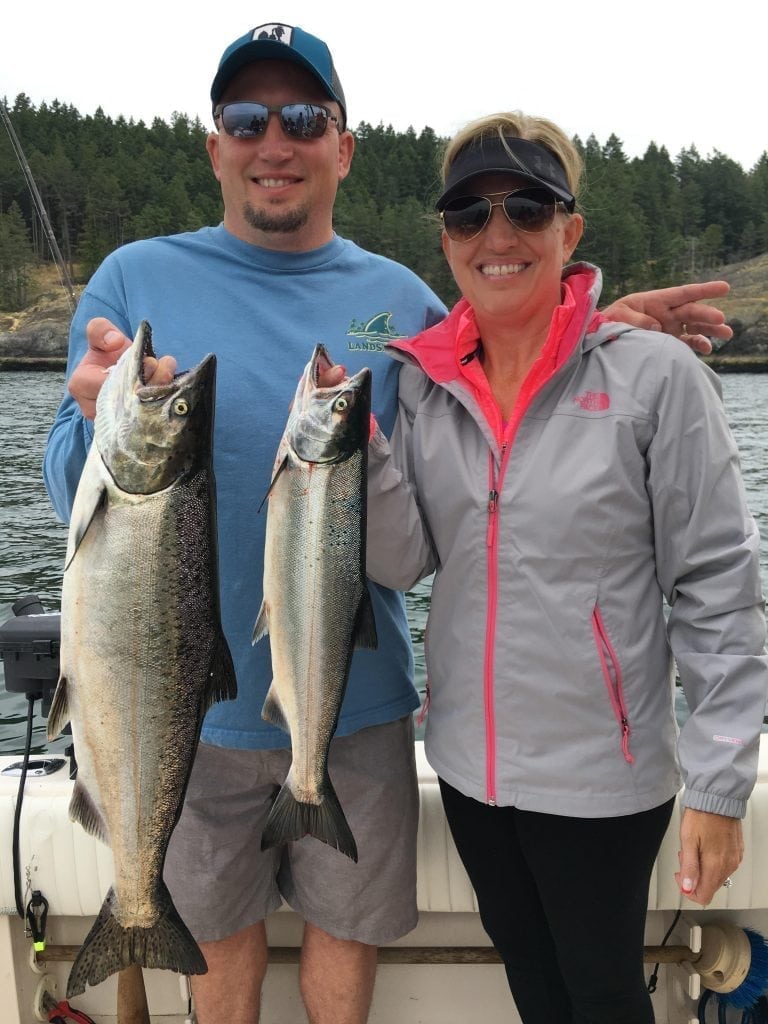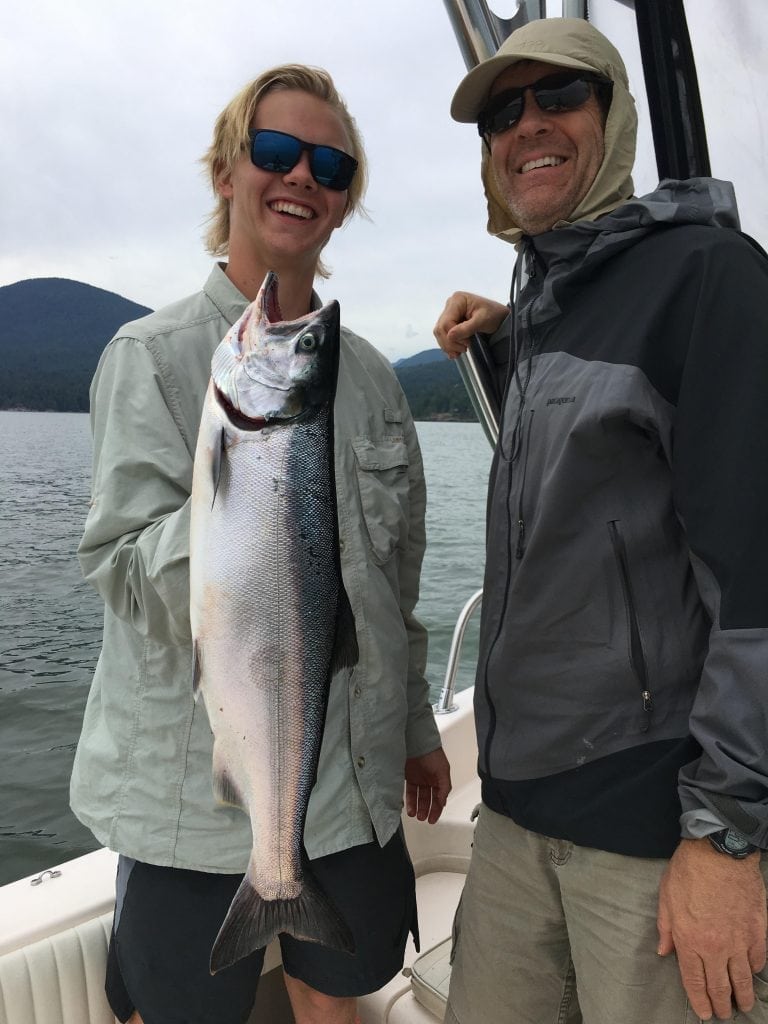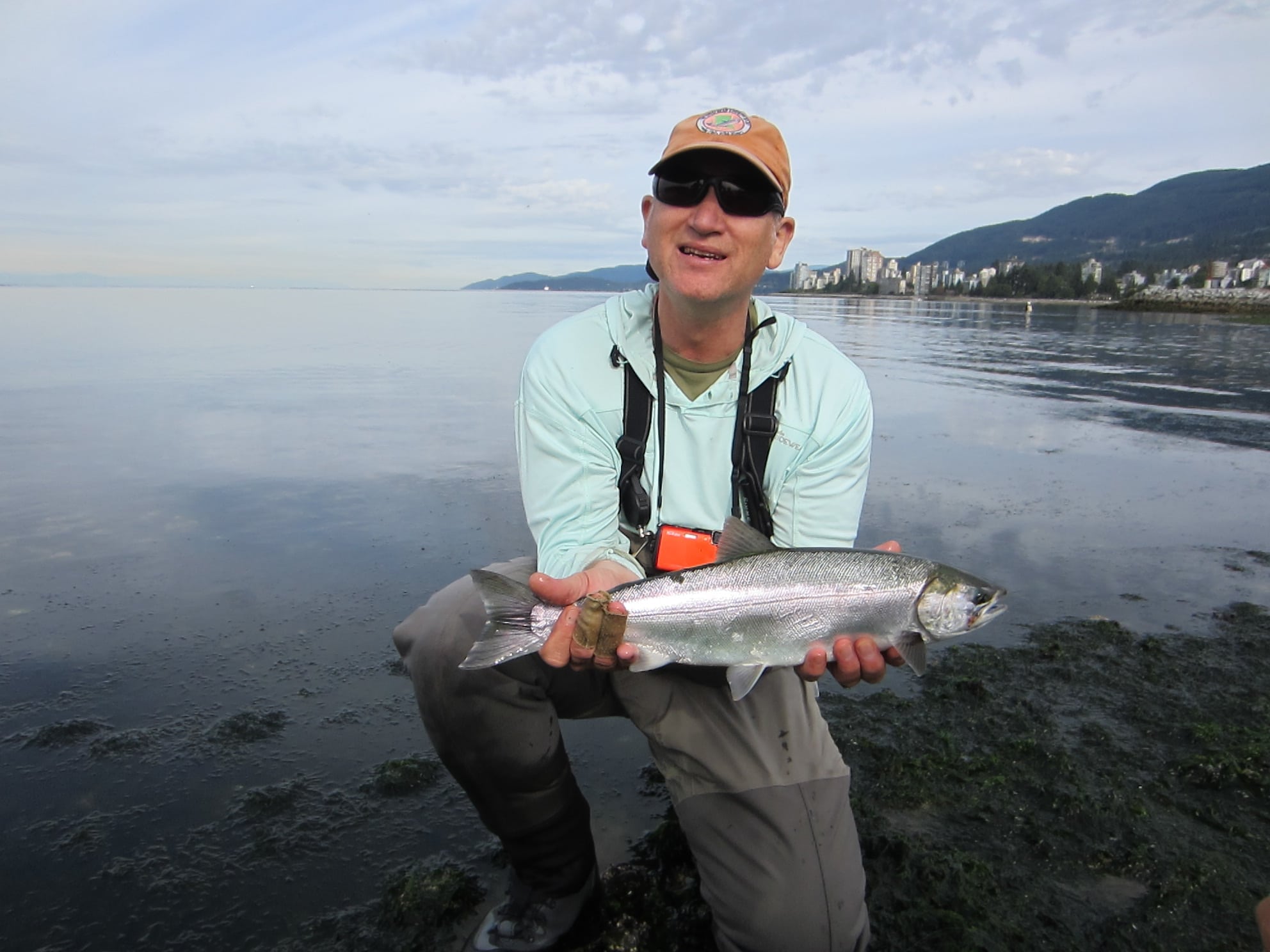OUTLOOK
Epic weather incoming! It looks as though we are about to see one of the first long heat spells of the summer! All weekend and well into next week we should see sun and temps in the mid to high 20s. Though it is great for spending time outdoors, the heat will affect our fisheries. In our reports below we will look at what to expect.
On the saltwater front we have had one of the most solid early Julys on record. The coho are coming in and we are still getting solid chinook reports. The heat will make the winds more of an issue so make sure to follow the marine forecasts closely and check out Jason’s saltwater report below.
We have an update on the Vedder. There have not been many fish reported but at least the conditions are good for fishing. Alex has more information in the Vedder river report below. The Capilano is still low and we are expecting the beach to be the focus for most anglers. We have an updated river report and Andre has some updates from the beach.
Even with the hot weather we have still heard some interior lake reports and Andre has a brief update with some tactics to try in the hot weather. Check it out in the lake fishing report.
This week on the Skagit front, Brendan has a really cool article on the bugs you can expect to see. He has some great pictures of the bugs with a little breakdown on their life cycles and characteristics. If you are a tyer you will not want to miss the cool pictures but also if you are new to understanding the bug life on the river this will give you a really good foundation. Brendan was on the river yesterday and we have some intel from what he saw and Matt is heading up today so we have some more reports next week.
On to the report!
CLASSES AND COURSES
Introduction To Fly Fishing
This course was specifically designed to give the new fly fisher the basic knowledge, casting skills and fly fishing strategies to effectively fish our local BC waters. This course is comprised of two sessions; 3hr evening seminar and a 3hr casting session. The dates below show the seminar date first and casting date second.
Dates: July 18 & July 22, 2018
Cost: $125.00 + GST
Seminar Time: 6:30pm – 9:30pm
Casting Time(s): 10am – 1pm or 2pm -5pm
FRESHWATER FISHING REPORTS
Capilano River Fishing Report
The rain was not enough to have any influence on the water level of the river. Some anglers reported slightly better action with the rain refreshing the fish already in the system. Overall, though right now they are quite skittish.
This does not mean they will not bite at all. It only means it is a challenge. If presented properly at the right angle swinging and stripping flies on a full sinking line at the upper pools can be productive.
Also for gears guys, casting very small spoons and spinners to irritate them is a good method to have them bite out of annoyance or anger. It is also a great method to search for active fish. If casting and retrieving doesn’t work twitch your spoon for more erratic movement.
Please release all steelhead and wild coho you encounter.
Stay safe out there,
Dustin Oh
Chilliwack River Fishing Report
Conditions continue to be favourable on the Chilliwack for those looking to hunt down some red chinook. While numbers are still building there have been a few confirmed fish landed so they are making their way through the system. The best bet would be to focus down low between the Crossing and the Train Bridge, however with the higher water some will shoot straight up and will hold in the upper pools so if things aren’t happening down low don’t be afraid to take a look higher up.
The best times to entice these fish is first light and last light; generally the bite trails off after 8-9am although that is not a hard and fast rule. As we close out the second week of July we are fast approaching the peak of the run so get your big globs of pro-cured roe, colorado blades, jensen eggs, and colourful streamers out and hit the river! Keep expectations low and you may be pleasantly surprised.
Alex Au-Yeung
Skagit River Fishing Report
Brendan hit the water yesterday and like we said in the outlook Matt is heading out today. We will have more intel from Matt’s trip next week but from what Brendan saw yesterday it is worth the trip. The water is high. The heat over the last few days raised the river a touch. One of the keys to a successful Skagit trip is covering water and if you cannot cross the river you are limited to the amount of water you can fish. There were a few spots were Brendan managed to cross but there were other areas where you could not cross. So again, if you are only planning a trip or two this season we recommend waiting but if you are heading out you should still have solid fishing.
Brendan managed a couple fish on dry flies but he did not see any noticeable hatches. This is common for this time of year and expect to focus on nymphing. They did quite well on the standard prince nymphs and stonefly nymphs.
With this in mind Brendan has prepared a very cool article on the most common bugs you will encounter on the Skagit with some great pictures he took last year. Take a look at it below. It will get you a great foundation for understanding the bug life on the Skagit.
Matt Sharp
Bugs On The Skagit
July 1st for me marks the start of one of my favourite fisheries. I spend a lot of my summer fishing the Skagit and getting to know the river so next time I can be even more prepared. I swear my fly box has grown unnecessarily at least twice in size over the past few seasons that I’ve fished the Skagit. Whenever I fish that river, I’m constantly turning over rocks and logs in the water and scanning the water’s surface for bug activity. From my findings I then decide on what fly to use that day.
The Skagit has 3 distinct bug species; Mayflies, Caddis, and Stoneflies and trout can be caught using flies that resemble all life stages of these flies.
The Mayfly
A Mayfly’s life cycle consists of an incomplete metamorphosis, with the following stages: egg, nymph, dun or subimago, and spinner or imago. There are countless species of Mayfly nymphs and each nymph species is somewhat similar but can also be very different. I won’t go into too much detail, but the main species of mayflies you’ll find on the Skagit are Bottom Burrowers and Crawlers / Clingers. Each of these species as a nymph live on the bottom and under rocks crawling around eating detritus and other dead material, and when swept up in the current, these nymphs become an easy meal for any hungry trout.
Bottom burrowers are smaller than crawlers and will hatch into subimago or adult mayfly and typically are that smaller size mayfly hatch that you will see early season on the Skagit. Hares ear, pheasant tail nymphs and copper johns in sz 10-16 are some of my favourite patterns to mimic the nymphal stage. For the adults, any parachute adams style fly in grey, olive and dun sz 10-16 are my favourites.
Crawler or Clinger mayfly nymphs tend to be bigger than the burrowers. Crawlers will hatch into those larger mayflies seen later on in the season and some become that famous large “green drake” hatch that many people talk about. In my box, I stock up on prince nymphs and girdle bugs sz 8-14 as well as some personal patterns and takes on classics that I have tied to resemble the bugs shown in the pictures. For the adults, grey wulffs and any larger mayfly and extended mayfly pattern in grey and olive are a must have in my box.
I haven’t touched on the imago or spinner stage of the Mayfly life cycle yet. Spinners are commonly referred to as “spent” mayflies, which are adult females that have flown back to the river to lay their eggs. After laying their eggs, the females will die making a very easy meal for nearby trout. Although I don’t fish spinners much, I always keep a few poly wing and spinner patterns in greys and olive sz 10-14 in my box as well as some soft hackles to resemble spent mayflies that have been swept up and tumbled over just under the surface.
Caddis
If you turn over pretty much any rock or log in the Skagit River, chances are you’ll find a cased caddis attached to it. There is quite a large population of caddis in the river, making them a primary food source for trout. Caddis begin their life cycle as a larvae and then begin making a home or “case” out of sand, small pebbles and sticks they find on the river bed. Fishing the pre- cased larvae can be effective, and I find cased caddis not to be much on the mind of the trout. Who would want to eat a bunch of sand and rock? What the trout really tend to key on occurs later in the season beginning mid-august when pupae begin to emerge from the case. Pupae are quite vulnerable to trout as they make their way towards the surface of the river to morph into adult caddis. When the caddis begin to hatch, dry fly fishing can be excellent. Small caddis patterns like the yellow sally and elk hair caddis in yellow and orange sz 12-18 are staples in my box, as well as some stimulator style flies sz 8-12 in the above colours.
Stonefly nymphs are typically much larger in size than the before mentioned bugs. At a nymphal stage, stoneflies are the predator of the underwater bug world. They tend to live in faster water and prey on smaller mayfly and caddis nymphs. The stoneflies on the Skagit are typically golden yellow in colour and golden stone patterns in sizes 8-12 resemble the nymphs well. Girdle bugs and pat’s rubber legs in brown/black as well as olive/black are also in my box in the above sizes. They can mimic a stonefly but also have the characteristics of a mayfly if fished in a smaller size.
Brendan Guraliuk
STILLWATER FISHING REPORTS
Interior Lakes Fishing Report
We have heard some more great reports from a few die hard lake fishing customers this past week mostly from the Cariboo region. The fishing has been poor in the shallows but fishing in depths of 30 to 45 ft have been productive were the fish are more comfortable to hang out for the rest of the summer doldrums. The fish were caught on leeches, dragon nymphs, booby flies and chironomids. A full sink line with a short leader hung off the side of the boat has resulted in some crushing grabs. This technique is a great alternative to fishing a 25ft+ leader on a floating line, which is more common in early season. Now it is not as important to have the right fly as to what the depth your fly is suspended. Also don’t rule out dry flies and leeches in the evening in shallower areas.
Andre Stepanian
SALTWATER FISHING REPORT
Vancouver Saltwater Salmon Fishing Report
We had some good to great chinook fishing from Nanaimo down to Gabriola earlier in the week when the winds allowed us to get there on our 10-hour trips. It is great to see so many chinook around in these areas almost into mid July. I have to say; the chinook fishing in general has been stellar this year starting in April, all the way until now, except for a bit of a slow period late June. If you step back and look at the season as a whole up to today, it has been an amazing April, May, June, and first half of July. I realize there are some chinook stocks of concern in other areas of the Pacific, but I would argue these local stocks are doing fine if not great. I hope DFO takes notice….
Unfortunately the winds don’t look good for getting across in the foreseeable future with sunny skies and NW 15-25 dominating the forecast. If they happen to get the forecast wrong or the wind warning drops, I would recommend making the crossing and fishing the structure around Gabriola in 150-225 feet of water and keep your gear close to bottom. I have been doing well with a Gibbs Lemon Lime flasher or Gibbs STS flasher with green glow hootchies or cuttle fish hootchies.
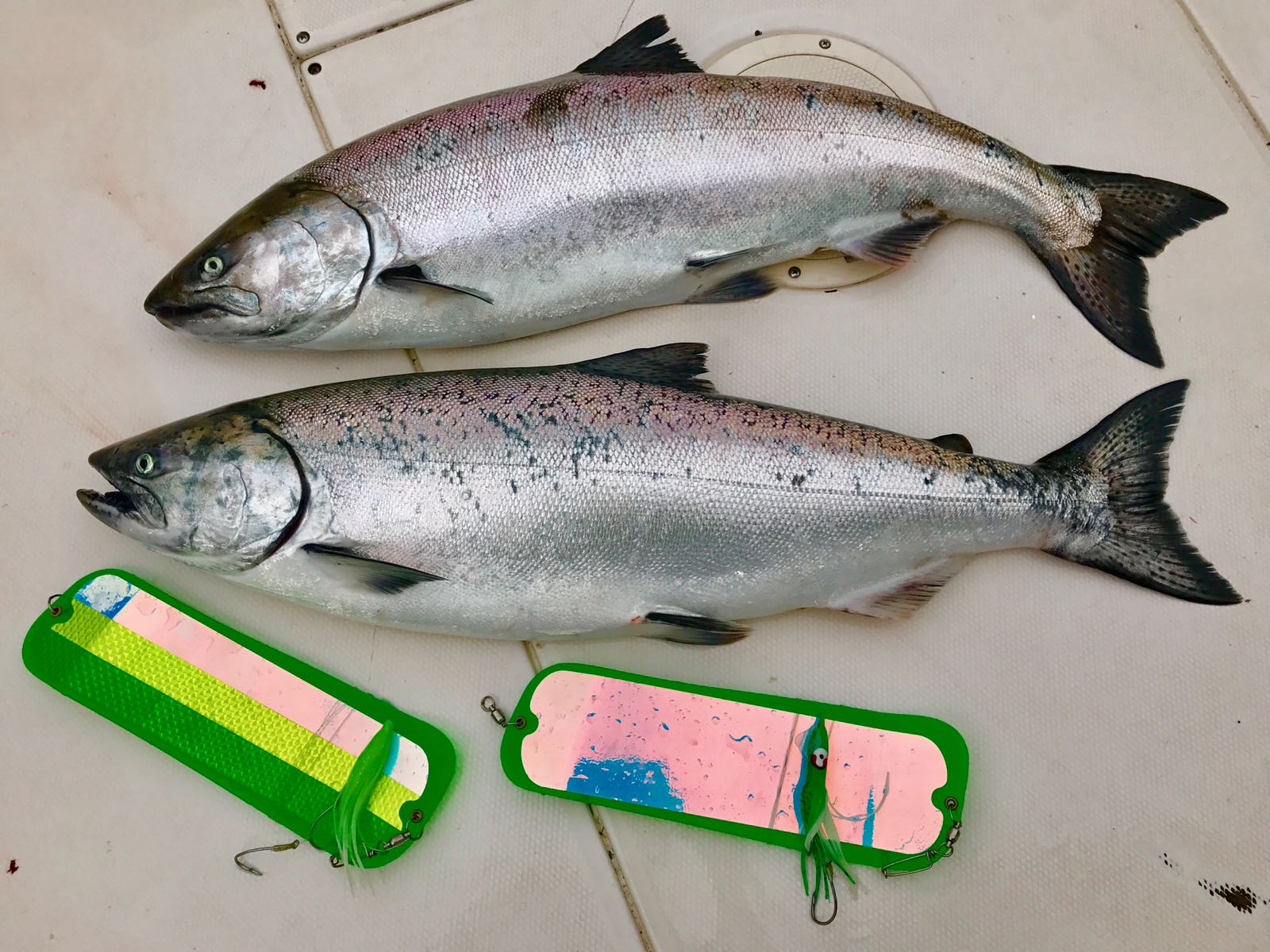
A couple of nice chinook Jason got at Thrasher earlier this week with plenty of other nice ones released.
Speaking of good fishing, how about this coho fishing? What a pleasant surprise to see good numbers of coho in the Strait of Georgia from the Gulf Islands all the way over to South Bowen. It seems a lot more hatchery fish have showed up this week as well. A good place to start would be the Hump and we have been doing well out there when the winds allow. Its seems from the surface down to about 100 feet on the riggers has been the hot zone and white hootchies have been excellent or any version of that with a bit of red or pink in it.
There have been a few chinook around South Bowen as well, but the better action has been for the coho with the chinook catch almost being incidental.
With the big NW winds it will be pretty rough out off the Hump or South Bowen so make sure you check the winds before you head out. If you are looking for some refuge from the wind you could try Howe Sound and fish some anchovies 80-150 on the riggers around Hole in the Wall and hope for some chinook. There has been a few coho as well, but usually a bit further off the rocks out in 500 feet.
Another good option for coho is West Van shoreline. There have been a few coho caught there each day for the past few weeks now, nothing red hot, but there have been some fish there consistently. I expect this area to pick up in the back end of July as these schools of coho off South Bowen move into the harbour.
There has been a decent number of chinook entering the Fraser as well if you keep track of the Albion test sets and there has been a few chinook hooked off the Bell Buoy. It is still early for this fishery but if you are looking for some chinook, this would be a good option. Bait is the way to go and fish 30-70 on the riggers.
Crabbing is slowing down, as the commercial fishery has been open for about a month. The more popular spots are now full of undersize, but if you set where the commercial traps aren’t there are still a few keepers around. Prawning has been decent as it seems the commercial fleet didn’t get as many as they usually do, so if you have a few prawning spots under your belt that usually produce in the spring, you might want to give them a try for some summer time BBQ prawns.
See you in the shop or on the water,
Jason Tonelli
Beach Fly Fishing Report
I have been on the beach since last Monday and I have to say it looks like a good start to the season. The regular patrons on the beach Enrico “The eliminator” has already hooked a bunch of coho and he is not going to stop for the next three months.
The tides are going to be good until Tuesday and then a few days of rest until the low tide cycle start again. The weather calls for heat and bright sunny days with the low tides in the afternoon but don’t think it is impossible to catch a coho, it is better to get out and learn as much as you can even if you don’t catch fish. I have caught many coho in my life later in the day and with sunny skies. They still show themselves once in a while and a few jumpers make you stay on the beach. It is pretty cool to witness this in the heart of the city.
Andre Stepanian


